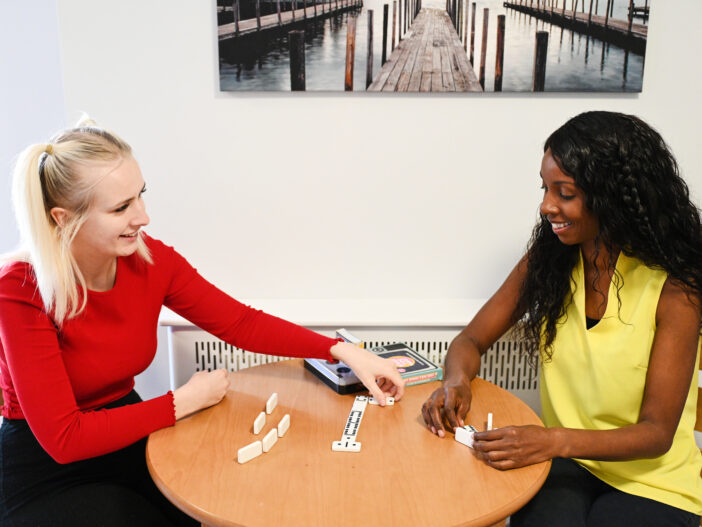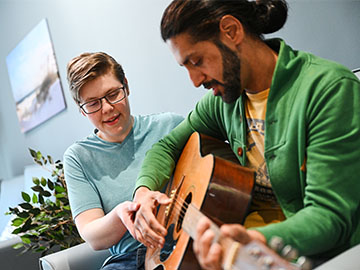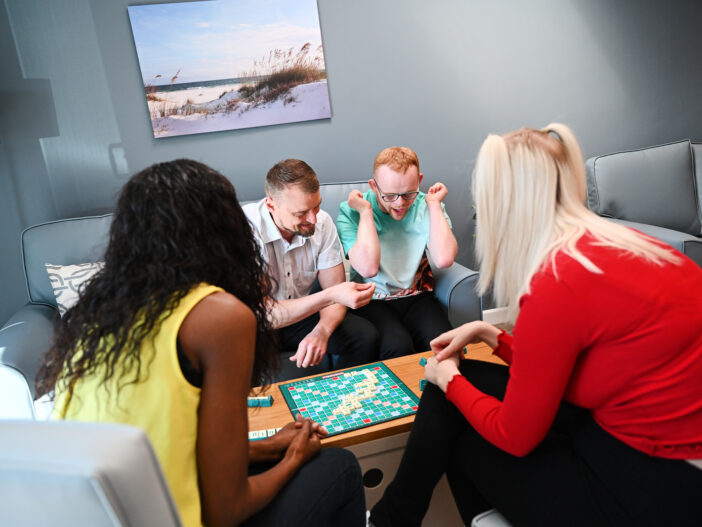Autism– finding a way to communicate
Social situations can be challenging for people with autism. Autistic people can often appear to be self-absorbed and in a world of their own, unable to communicate and interact successfully with others. They may also have difficulties communicating non-verbally, such as making eye contact, use of facial expression or body language.
At Voyage Care, we work hard on supporting people with their own individual needs and promote games and social spaces to encourage interaction, such as turn taking turn and sharing, which then builds on social communication. We also use a number of augmentative and alternative communication aids to enable people to express their needs and wishes and therefore reduce anxieties.
Our picture schedules offer visual support to help the individual to understand what is happening throughout the day and in what sequence. We use visual languages such as Makaton, which uses signs and symbols to help individuals to communicate. We use social stories to enable people to understand what to expect in certain situations, for example going to the dentist or to see the doctor. We also use tools such as the Beyond Words books and story apps to help the people we support to understand the world and their health.
Autistic people have a very literal understanding of language and struggle to understand metaphors, sarcasm and figures of speech. To aid their understanding, it is important to use clear and concise language. Auditory processing delays mean it takes longer to process the spoken word and work out the literal meaning.
Communication at all levels can be difficult for autistic people, this is why it is vital to understand each person’s needs and preferred methods of communicating. Our support teams understand the difficulty and difference each autistic person may have in coping with change, self-reliance and solving minor problems. We provide the people we support with personalised tools, support and opportunities to make choices and take their own decisions.

 Information
Information 

